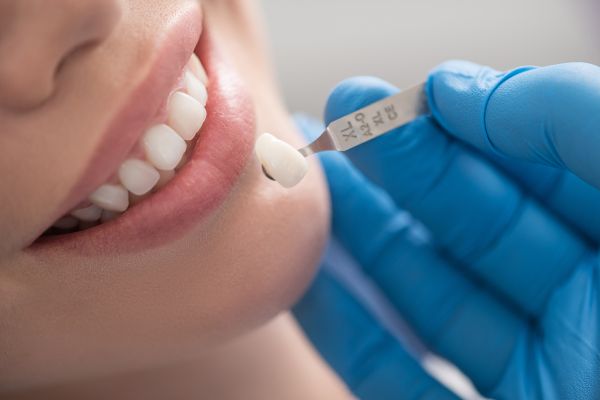What is the Difference Between Dental Veneers and Laminates?

Dental laminates and dental veneers are two common procedures done to improve the overall appearances of someone's smile. From color to shape and size, both options ultimately provide non-invasive treatments to unpleasant smiles. But what is the difference between the two?
What are dental veneers?
Dental veneers are thin, tooth-colored shells placed on the surface of the teeth to improve appearance, giving patients a better-looking smile. The procedure used to place veneers is minimally invasive and requires a small amount of enamel be removed for them to fit.
What are dental laminates?
Dental laminates have the same function as veneers and are sometimes the two terms are used interchangeably. Laminates differ in the sense that they are much thinner and require less amount of enamel to be removed for them to be placed.
Does this difference matter?
Knowing the difference between dental laminates and dental veneers matters because it can help a patient decide which option is best for their teeth and smile needs. For instance, someone with crooked teeth or who has gaps are much better off getting veneers which are more flexible and stabler than dental laminates. However, if the issue is discoloration or minor chips, laminates are a great option because they are lightweight and do not require much enamel removal.
Primary differences
Dental Veneers:
Dental veneers are made of two different materials namely composites and porcelain.
Composite veneers are the less preferred choice as they are prone to staining. However, getting composite veneers requires less prep work on the natural teeth and a patient can walk out with them on the same day.
On the other hand, porcelain veneers are typically double the price of composite veneers and require the removal of enamel for their placement. They also cannot be repaired if chipped or damaged. However, they have a natural appearance, are more durable and can last up to ten years.
Placing veneers, especially porcelain veneers, requires the removal of some of the enamel on the teeth and the reshaping of the tooth. This is done in order for the veneer to lay flat and avoid having a bulky, unnatural appearance. This poses a problem because the tooth’s natural protection is removed and the only thing left to protect it is the veneer. While they can be replaced, once the veneer is removed the tooth loses its protection.
Laminates:
Laminates can be referred to as an advanced porcelain veneer as they both share the same function and benefits. However, when placing laminates, the enamel and structure of the tooth do not have to be altered. While this may be better in the long term for the health of the tooth, getting laminates still has its disadvantages.
While laminates are only as thick as a contact lens and a thinner alternative to porcelain veneers, they can be bulky on the teeth when they are placed without altering the tooth. They are also usually more expensive than porcelain veneers.
Which is best? It all depends!
The decision ultimately lies in the hands of the patient and the dentist with regards to which option is better. This is because the needs of each patient vary and one option usually outweighs the other when personal needs, cost, and other factors are applied.
Dental veneers and dental laminates are great options when it comes to having a smile enhancement. Visit your dentist to find out if you are a suitable candidate and which option would be best for you!
Request an appointment here: https://drcalldental.com or call Dr. Call Dental Center at (706) 425-6240 for an appointment in our Dalton office.
Check out what others are saying about our dental services on Yelp: Dental Veneers and Dental Laminates.
Related Posts
Gum disease is one of the most common oral health issues dentists encounter in patients of all ages. It can range from mild gum irritation to severe conditions that affect the tissues and bones supporting your teeth. The root cause of gum disease is typically the accumulation of plaque on the teeth and gums. Understanding…
Dental bonding is one of the treatment options available for individuals seeking to improve their smile. A report by the American Dental Association found that almost 33% of young adults avoid smiling due to the condition of their teeth. This statistic shows the effect of dental aesthetics on one’s social life and self-esteem. This article…
Chipping needs dental bonding so that the tooth can regain its proper structure. Trauma and decay are the most common causes of dental chipping. Both cause the tooth to weaken and break easily. Your dentist must use this treatment to correct the damage right away. Here are the details on using dental bonding to repair…
When sudden dental pain occurs, an emergency dentist can provide critical relief and timely treatment. A toothache often appears unexpectedly, disrupting daily activities or restful sleep at night, signaling that you need urgent dental care. Understanding what steps to take when this type of pain occurs can help prevent further complications to your teeth and…


